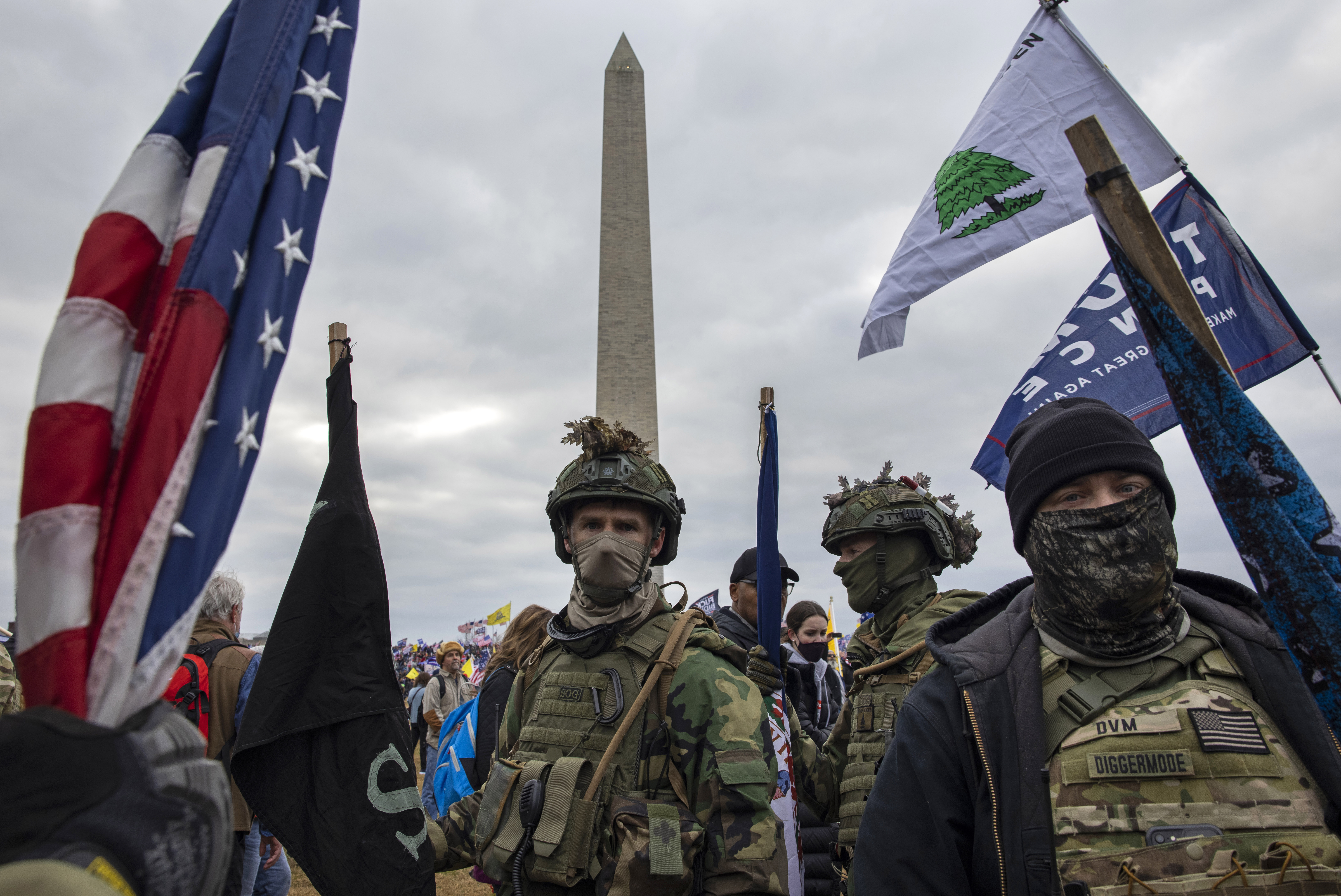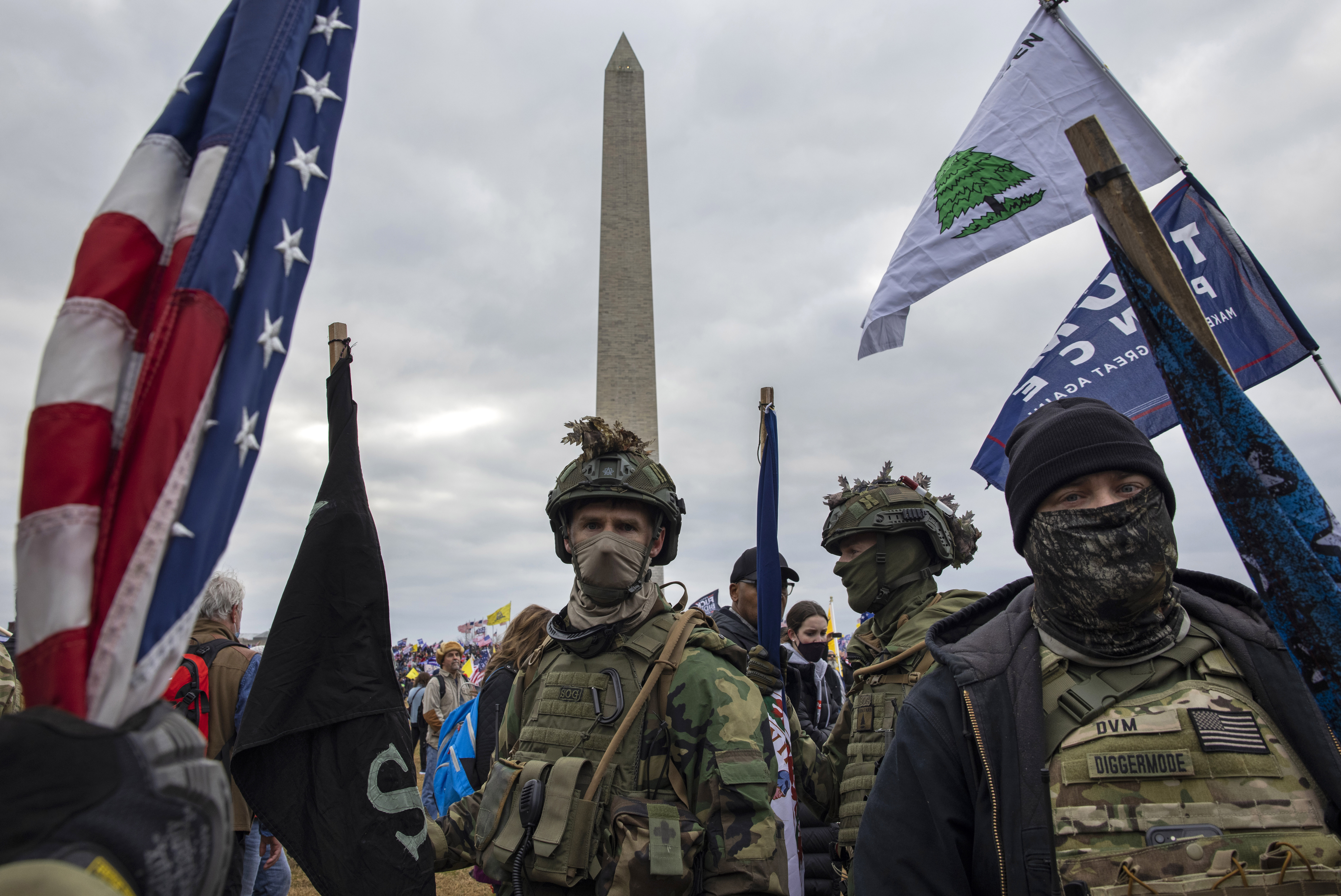

The Army released new directives Wednesday aimed at defining “extremist” and gang-related activity, two ideas that leaders have long struggled to spot within the ranks. The new rules direct new training and spell out guidance to commanders on how to handle soldiers who may be affiliated with groups widely viewed as dangerous.
The new rules aim to define “active participation,” an Army spokesperson told Task & Purpose. The new directives give commanders more guidance on “when they should take action,” and helps clarify to NCOs and soldiers on “what they can and can’t do.”
According to a study by the RAND Corporation, a variety of factors lead military members to be attracted to extremist movements like “having a passion for political change, looking for a sense of belonging, and seeking excitement.” For veterans who leave active duty and lose their sense of belonging or purpose from their job in the military, the connection is clear. But there are a host of other experiences that can influence people to become extremist followers such as traumatic life events, propaganda, interactions with extremist group members and social bonds with those members, “especially if individuals are feeling lonely or isolated.”
The Pentagon’s handling of troops with extremist views goes back decades. During World War II, the Army started a unit known as the 620th Engineer General Services Company as an unofficial place to keep German-born soldiers, whom commanders suspected of being disloyal. In the 1986, the Pentagon issued a memo on participation in hate groups after reports surfaced of service members involved in Ku Klux Klan activities.
More recent examples have featured troops with far right and white supremacist ideologies like the scores of active duty troops and veterans who participated in the Jan. 6 assault on the Capitol in Washington D.C. There was also Marine Corps Lance Cpl. Vasillios Pistolis who was imprisoned in 2017 and kicked out of the service for joining the white supremacist “Unite the Right” rally in Charlottesville, Virginia.
The problem for the military, according to RAND, has been how to define extremism. The Army directive issued Wednesday morning, tried to do just that.
Under the new policy, soldiers are directly prohibited from “posting, liking, sharing, re-tweeting, or otherwise distributing content” to endorse extremist activities.
“You’ve always been accountable for your online presence but this definitely clarifies some of that,” the spokesperson said. If a soldier argues that they liked or shared extremist content in a personal capacity, the directive now clarifies that it isn’t allowed, they added.
The two directives were born out of a request by Congress in the 2021 National Defense Authorization Act. The directives will also influence the Army’s new command policy on these topics which is set to be released later this year.
Defining extremist and gang activities
One of the new directives issued Wednesday updates Army policy by explaining what active participation in those activities looks like in order “to add clarity for Soldiers and Commanders,” Col. Jon Clausen from the Assistant Secretary of the Army for Manpower and Reserve Affairs office said in a statement.
Under the directive, extremist activities include advocating or engaging in force or violence to “deprive individuals” of constitutional or legal rights; encouraging military or civilian Defense Department personnel to violate laws; and advocating or supporting “the overthrow” of the U.S. government.
“Extremism calls into question a Soldier’s ability to follow orders from, or effectively lead and serve with, persons of diverse backgrounds, and it prevents maximum utilization and development of the Army’s most valuable asset-its People,” according to the directive.
The directive also addresses soldiers’ gang participation and defines criminal gangs as organizations “that advocate the planning or commission or one or more criminal offenses” and share a group identity through shared names, slogans, tattoos, graffiti, clothing style or color.
Subscribe to Task & Purpose today. Get the latest military news and culture in your inbox daily.
Under the policy, covered extremist activities are defined as advocating for “widespread” discrimination based on race, color, origin, religion, sex, gender identity or sexual orientation and engaging in force or violence to “achieve goals that are political, religious, discriminatory, or ideological in nature.”
The directive also further defines what actions the Army will consider as participation in or support for extremist ideologies and activities. This means soldiers are prohibited from providing resources or material support; communicating information that compromises operational security of military organizations or missions; recruiting others; fundraising or personally contributing to an extremist organization; creating, organizing or taking a leadership role in those organizations; demonstrating or rallying in support by attending meetings; distributing literature or promotional materials; and displaying paraphernalia, words or symbols (flags, clothing, tattoos, bumper stickers on or off base).
The policy also enhances and training requirements, Clausen said. Now, soldiers in initial active duty training, pre-commissioning training, professional military education, and commander training will receive education on extremism.
Reporting
One of the new directives asks commanders to be more vigilant about spotting extremist tendencies and reporting them up the chain. This includes remaining “attentive for signs of extremism” even if it “may not rise to the level off active participation.”
Currently, commanders are required to report allegations of extremist participation to Army counterintelligence units and the Army Criminal Investigation Division. But with the new guidance, commanders will now also report allegations to the Army Inspector General office.
The directive follows requirements set in the 2021 NDAA for service IGs to work with the Deputy Inspector General for Diversity and Inclusion and Extremism in the Military “to establish policies, processes, tracking mechanisms and reporting requirements for allegations of supremacist, extremist, and criminal gang activity in the Army,” Sean Mackintosh from the Army Inspector General Agency said in a statement.
The IG will be required to send quarterly reports to Army and DOD officials on allegations, actions taken and investigations for substantiated and non substantiated extremist cases. Every year, a report will note any major trends or incidents found by the IG.
Before the directive, all prohibited activities, including extremism, were not tracked separately by Army entities. For example, allegations of any prohibited events like driving under the influence or extremist activity were tracked under the same procedures.
The directive empowers commanders to prohibit soldiers from participating in extremist activities that can “affect readiness, good order and discipline, or morale within the command.” The policy states that commanders can choose adverse administrative actions in addition to or in lieu of other punitive measures like Uniform Code of Military Justice action, involuntary separation, reassignment, loss of security clearance, bar to continued service or other administrative actions.
“In an effort to minimize the risk of future active participation in extremist activities, commanders should remain alert and should intervene early, primarily through counseling, when observing signs of future extremist activities that may not rise to the level of prohibitions,” the directive states.
